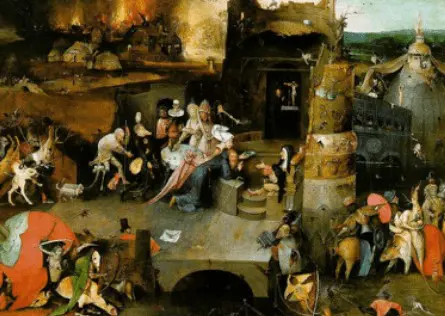
MUSEU DE ARTE ANTIGA, the Portuguese “Prado”.
Address: Rua das Janelas Verdes
Phone: (+00351) 213 912 800
Web: https://www.museudearteantiga.pt
Open: 14:00-18:00 tuesday; 10:00-18:00 wednesday-sunday
Closed: 1 January, Easter Sunday, 1 May, 25 December
“Free on Sunday mornings”
Transport: Bus – 713, 714, 727 Trams – 15, 18
The national collection of ancient art can be seen in a 17th century palace, built for the Counts of Alvor. But in 1770 it was acquired by the Marquis of Pombal after the massacre perpetrated in the “Process of the Tavora”, which we will reveal in our Free Tour. The museum was inaugurated in 1884, and is familiarly known to Lisboners as “Museu das Janelas Verdes”, because of the green windows. A modern annex (including the main façade) was added in 1940. It was built on the former site of the Carmelite monastery of St. Albert, which was partially destroyed between 1910 and 1920. The only surviving element is the chapel, today integrated into the museum.
The museum houses the largest collection of paintings in the country, with a special emphasis on early religious works by Portuguese artists. Most of the exhibits come from convents and monasteries after the disentailment of the religious orders in 1834. It also exhibits sculpture, silverware, porcelain and applied arts, offering an overview of Portuguese art from the Middle Ages to the 19th century, complemented by some European and Oriental pieces. The theme of discovery is ever-present, illustrating Portugal’s links with Brazil, Africa, India, China and Japan.
Among all the works are Bosch’s “Temptations of St. Anthony” and the “Panels of St. Vincent”, painted between 1470 and 1480 by Nuno Gonçalves and depicting the patron saint of Lisbon surrounded by dignitaries, knights and monks, as well as fishermen and beggars.
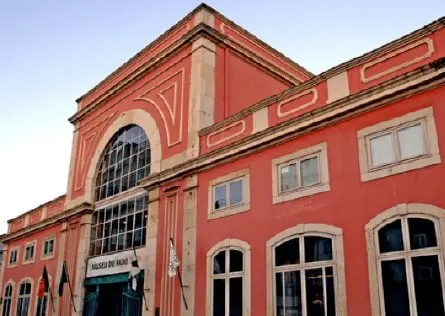
MUSEU DO FADO
Address: Largo Chafariz de Dentro 1
Phone: (+00351) 218 823 470
Web: https://www.museudofado.pt
Open: 10:00-18:00 Tuesday-Sunday
Closed: 1 January, 1 May, 25 December
Transport: Bus– 206, 210, 728, 735, 759, 794
The Museu do Fado was inaugurated on 25 September 1998 and is a museum dedicated to the world of Fado and the Portuguese guitar. The museum is located in the Alfama district of the city of Lisbon, Portugal. The museum building was once the water pumping station for the Praia site. It was built in 1868 and is classified as a building of public interest. This cultural space is nowadays a reference among the cultural spaces in Lisbon. It has a permanent exhibition, a temporary exhibition space, a documentation centre, a thematic shop, an auditorium and a restaurant. It also has a school where Portuguese guitar and viola courses are given, where you can also attend a seminar for composers and have rehearsal rooms available.
It was inaugurated in 1998 as a museum in which to build the history of Fado and its heritage. Since then, the museum has researched, preserved and disseminated Fado. During its activity, it has collected different collections of material related to Fado – newspapers, photographs, scores, musical instruments, costumes, medals, professional documentation, licences, etc. -. He has also collaborated in the compilation of the intangible heritage related to the world of Fado, such as its songs.
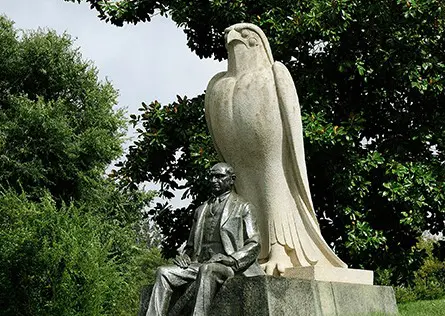
MUSEU CALOUSTE GULBENKIAN
Address: Avenida de Berna 45
Phone: (+00351) 217 823 000
Web: https://www.museu.gulbenkian.pt
Open: 10:00-18:00 Tuesday-Sunday
Closed: 1 January, Easter Sunday, 1 May, 25 December
“Free on Sundays”
Transport: Metro – Praça de Espanha, Autobuses – 716, 726, 742, 756
Calouste Gulbenkian, born in Scutari, Turkey, in 1869, began his art collection at the age of 14, when he bought several ancient coins in a bazaar. In 1928, he received a 5% stake in four major oil companies through the transfer of capital from the Turkish Oil Company to the four companies, earning him the nickname “Mr. Five Percent”. Thanks to his enormous wealth he was able to indulge his passion for art. During World War II he moved to Portugal, which had declared its neutrality, a fact that we will develop in detail in the first part of our Tour de Belém, and when he died in 1955, he bequeathed his fortune to create a foundation in his name with its headquarters in Portugal. The foundation sponsors numerous cultural activities and finances its own orchestra, art libraries, auditoriums and a modern art centre.
The museum’s collection is one of the most important in Europe. It opened in 1969. The building is set within a large park, so that natural light illuminates the rooms and is laid out with its founder’s collection in mind.
It was inaugurated in 1998 as a museum in which to build the history of Fado and its heritage. Since then, the museum has researched, preserved and disseminated Fado. During its activity, it has collected different collections of material related to Fado – newspapers, photographs, scores, musical instruments, costumes, medals, professional documentation, licences, etc. -. He has also collaborated in the compilation of the intangible heritage related to the world of Fado, such as its songs.
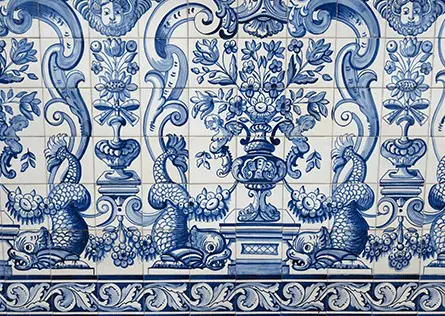
MUSEU NACIONAL DO AZULEJO
Address: Rua da Madre de Deus 4
Phone: (+00351) 218 100 340
Web: https://www.museudoazulejo.pt
Open: 10:00-16:00 Tuesday-Sunday (last entry 30 minutes before closing time).
Closed: 1 January, Easter, 1 May, 25 December
“Free from 10:00-14:00 on Sundays”
Transport:Buses – 718, 728, 742, 759, 794
In our Free Tour we will tell you about the history of the tile, but if you want to know more about this Portuguese icon, this museum is the perfect place. Dona Leonor, widow of King João II, founded the Convent of the Adre de Deus in 1509. Originally built in the “Manueline” style, which we will tell you about in our tour of Belém, the church was restored under the reign of João III following a Renaissance design. The baroque decoration was added by João V. The cloisters of the convent are a wonderful setting for the National Tile Museum. Decorative murals, individual tiles and photographs trace the evolution of the tile, its introduction by the Arabs, the Spanish influences and the development of the indigenous Portuguese style.
The idea of covering walls, floors and even ceilings with tiles was introduced in Spain and Portugal by the Arabs. From the 16th century onwards, Portugal began to make its own creations. In the 18th century, it was the leading producer in Europe, and they had multiple purposes and designs; the baroque blue and white ones are considered the best. Tiles are nowadays an important addition to the interior and exterior of Portuguese buildings.
The museum’s collection is one of the most important in Europe. It opened in 1969. The building is set within a large park, so that natural light illuminates the rooms and is laid out with its founder’s collection in mind.
It was inaugurated in 1998 as a museum in which to build the history of Fado and its heritage. Since then, the museum has researched, preserved and disseminated Fado. During its activity, it has collected different collections of material related to Fado – newspapers, photographs, scores, musical instruments, costumes, medals, professional documentation, licences, etc. -. He has also collaborated in the compilation of the intangible heritage related to the world of Fado, such as its songs.

MUSEU NACIONAL DOS COCHES
Address: Praça Afonso de Albuquerque
Phone: (+00351) 213 610 850
Web: https://www.museudoscoches.pt
Open: 10:00-18:00 Tuesday-Sunday
Closed: 1 January, Easter, 1 May, 25 December
“Free first Sunday of the month”
Transport: Train line to Cascais (Belém stop) Buses – 714, 727, 728, 729, 751 Trams – 15
A good suggestion to visit after the end of our tour of Belém is the Museu dos Coches. This collection of carriages is the finest in Europe. The east wing of the Belém Palace, which housed the riding school built by the Italian architect Giacomo Azzolini in 1726, is now occupied by the museum. The royal family used to settle in the upper gallery to watch their horses prance around the track. In 1905, Dona Amélia, wife of King Charles, turned the riding school into a museum.
The tour covers three centuries of history, with carriages from Portugal, Italy, France, Austria and Spain. In the main gallery, decorated in the Louis XVI style with wonderful frescoes, carriages that belonged to the royal family are displayed. The collection begins with the simple red leather-covered wooden carriage of Philip II of Spain. The carriages become increasingly luxurious: the interiors are lined with red velvet and covered with gold, and the exteriors are decorated with allegorical images and noble coats of arms. The exhibition ends with three large Baroque floats made in Rome for the Portuguese ambassador to the Vatican, Dom Rodrigo Almeida e Menezes, Marquis of Abrantes. These carriages are a display of extravagance and pomp. They weigh five tonnes each and are decorated with life-size gilded sculptures. Two-wheeled cabriolets, landos and horse-drawn carriages belonging to younger royals can be seen in the attached gallery. There is also a 19th century taxi, painted in black and green, colours that were abandoned in the 1990s in favour of beige, but are now being revived.
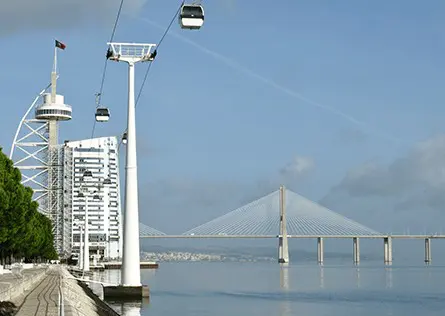
PARK DAS NAÇÕES
Address: Avenida Dom João II
Web: https://www.parquedasnacoes.pt
Transport:Metro Red Line – East
Originally the site of Expo’98, but with contemporary architecture, family-friendly attractions and modern spaces, it has renovated the east bank which, until 1990, was an industrial area. From a distance, the immense geometry of the roof platforms above Oriente station, designed by the Valencian architect Santiago Calatrava.
Portugal’s amazing pavilion, designed by Portuguese architect Álvaro Siza, has a roof that seems to be miraculously held up like a canvas over a courtyard. Children will enjoy the Pavilhão do Conhocimento – Ciencia Viva, a modern science and technology museum that houses several interactive exhibits. The Lisbon Casino is located in the space formerly occupied by the Pavilion of the Future. Visitors can take the park’s cable car up to the Vasco da Gama tower, Lisbon’s tallest building, which houses a hotel. The views over the Tagus and the Vasco da Gama bridge are spectacular. The bridge, at 17 km, is the longest in Europe. It was completed for the 1998 World Expo.
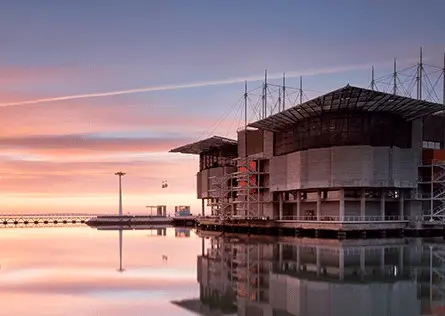
OCEANARIO DE LISBOA
Address: Esplanada D. Carlos, Parque das Nações
Phone: (+00351) 218 917 002
Web: https://www.oceanario.pt
Open:April-October 10:00-20:00 daily, November-March 10:00-19:00 daily
Transport: Metro Red Line – Oriente Buses – 705, 728, 744, 750
The oceanarium is the main attraction of Parque das Nações. Its airplane-like structure was designed by American architect Peter Chermayeff and is located at the end of a pier, surrounded by water. It is the second largest aquarium in the world and is home to a wide variety of species: birds, mammals, fish and other marine inhabitants. It is divided into four different areas, representing the Pacific, Indian, Atlantic and Antarctic oceans, with their respective flora and fauna. The central tank is the main attraction for visitors, where small fish, barracudas, sharks and rays live together in complete harmony.
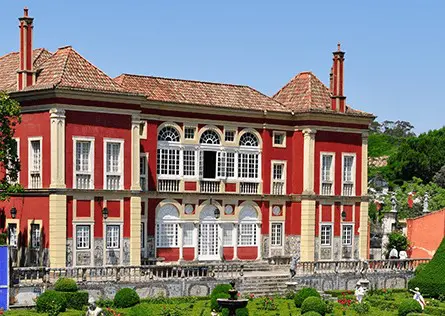
PALACIO FRONTEIRA
Address: Largo São Domingos de Benfica 1
Phone: (+00351) 217 782 023
Open:June-September passes at 10:30, 11:00, 11:30 and 12:00 Monday to Saturday; October-May passes at 11:00 and 12:00 Monday to Saturday
Closed: Sundays
Transport: Metro Blue Line– Jardín Zoológico Autobuses – 770
In 1640 this pleasant mansion was the hunting lodge of João de Mascarenhas, the first Marquis of Fronteira. Although the houses of Lisbon can be seen in the distance, the building still occupies a peaceful setting next to the Monsanto Forest Park. In the palace as well as in the garden, tile murals abound with marvellous scenes of monkey battles. Although the twelfth marquis lives there, it is possible to visit some of the rooms, as well as the library and the garden. The Battle Room contains beautiful tiled murals with scenes from the Restoration War, which we will talk about in our Free Tour, showing the Marquis fighting a Spanish general. The late 16th century chapel is the oldest part of the house. The facade is decorated with rocks, shells, shards of glass and porcelain that are said to have come from the opening party of the palace, when the crockery was smashed to ensure that no one else could use it. The visit to the garden begins on the terrace of the chapel, whose niches are tiled with scenes and images of mythological creatures. In the Italian garden the box hedges are sculpted in forms symbolic of the four seasons.
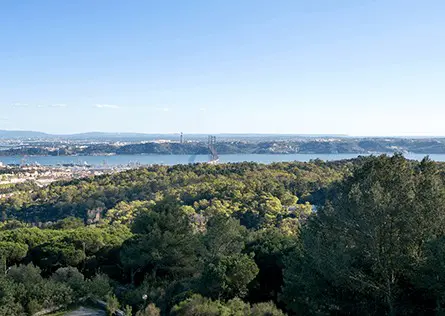
MONSANTO PARK
Address: Estrada do Barcal – Monte das Perdizes
Phone: (+00351) 217 710 870
Web: https://www.cm-lisboa.pt/en/living-in/environment/monsanto-forest-park
Transport:Buses – 711, 724
It is the largest green space located in the centre of Lisbon with about 1000 ha. Integrated in the park, the Lisboa Camping offers its visitors two multi-sports areas, a mini-golf course, two tennis courts, a swimming pool area with solarium and esplanade, a social room and an amphitheatre. In the park we find: Espaço Monsanto (Interpretation Centre) – This is the centre where you should go to learn about the Monsanto Ecological Park with temporary exhibitions and the permanent exhibition. There is also a medium-sized auditorium and, outside, a small amphitheatre, a car park and a small open-air picnic area.
In Monsanto you can visit the Parque Recreativo do Alto da Serafina, the Parque Recreativo do Calhau, an ideal place to go for a walk, the Bosque de São Domingos de Benfica, the Parque Infantil do Alvito, an area for young children, the Parque Urbano dos Moinhos de Santana and the Viveiros da Quinta da Fonte.
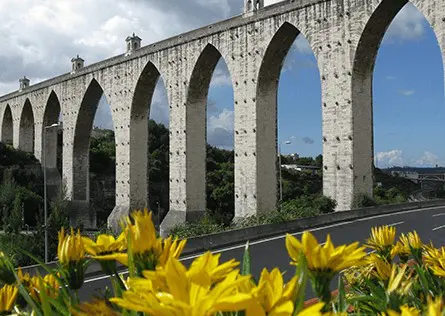
AQUEDUTO DAS AGUAS LIVRES. Water Museum
Address: Rua do Alviela 12
Phone: (+00351) 218 100 215
Open: 10:00-8:00 Tuesday to Saturday
Transport:Buses – 734, 735
Considered at the end of the century as the most beautiful monument in Lisbon, it crosses the Alcântara valley to the north-east of the city. The need to build a new aqueduct in Lisbon gave João V the ideal pretext to indulge his passion for pharaonic projects, as the only area with drinking water was the Alfama district. The project was financed by a special tax on meat, wine, olive oil and other foodstuffs, and although it was not completed until the 19th century, by 1748 it was supplying the city with water. The main channel is 19 km long, but its total length is 58 km. The most visible part of this formidable structure are the 14 arches that span the Alcantara Valley, the highest of which rises to a spectacular height of 65 metres.
The footpath along the aqueduct, once a pleasant walkway, was closed in 1853 to prevent the bandit Diogo Alves from continuing to throw his victims off the bridge. Guided tours of the Alcantara arches are available today. Excursions are also offered to the Mãe d’Água reservoir and springs that supply the town. It is advisable to contact the Museu da Água for information in advance. At the end of the aqueduct stands the Mãe d’Água das Amoreiras, a castle-like structure that once served as a cistern. The original design of 1745 was by the Hungarian architect Carlos Mardel, who worked for Pombal on the reconstruction of the Baixa. When it was completed in 1834, it became a popular meeting place, even for kings and their mistresses. It currently hosts exhibitions of local artists and other events.
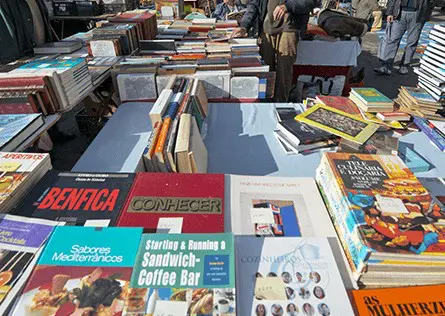
FERIA DA LADRA
Address: Campo de Santa Clara
Open: 7:30-13:00 Tuesdays and Saturdays
Transport:Buses – 712 Tramway – 28
The “La Feira da Ladra” is held every Tuesday and Saturday from early hours. If the weather is good, the market is likely to last until well after 16:00. It is said that the Feira da Ladra in Lisbon is reminiscent of the Rastro in Madrid, although we think that the former still retains the charm of the improvised markets with all kinds of curiosities that the famous Madrid market has unfortunately lost over time. The Feira da Ladra owes its name to its not very legal origin (“ladra” means thief), as it was the place where stolen objects were sold. The fair has been held since the Middle Ages, making it the oldest market in Lisbon; in fact, it has passed through several locations since then until its current location in Campo de Santa Clara.
For us, the Feira da Ladra is an interesting and almost obligatory visit in Lisbon, as browsing through its stalls of antiques and various objects has become a great way to spend a Saturday morning. If you’re lucky and bargain well, you can take home some souvenirs of Lisbon that are much more original than what you’ll find in any souvenir shop. The influence of the colonial past can be seen in some of the stalls selling African statuettes, masks and jewellery. Fish, vegetables and herbs can be bought at the central market, which is decorated with wrought iron.


